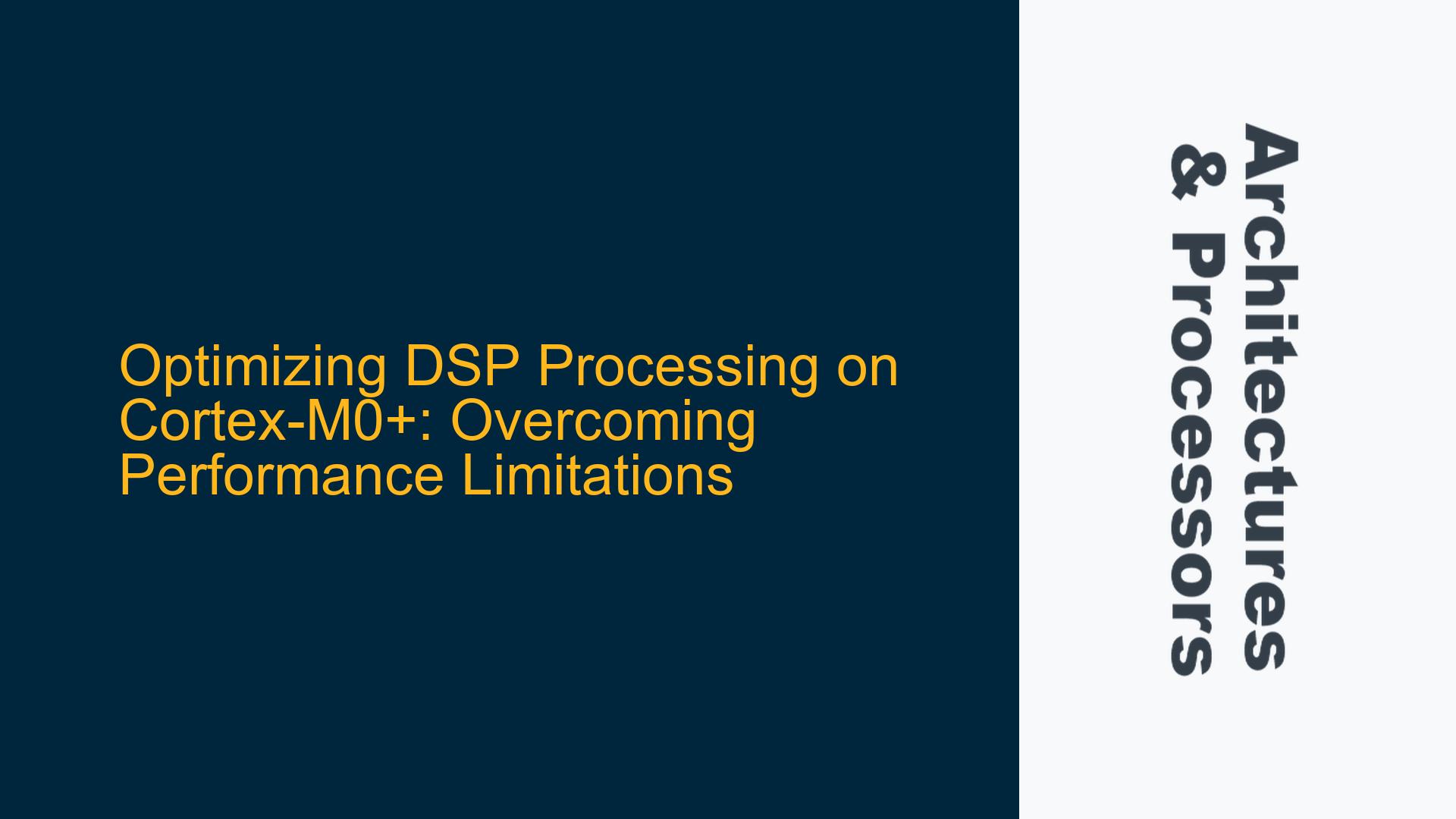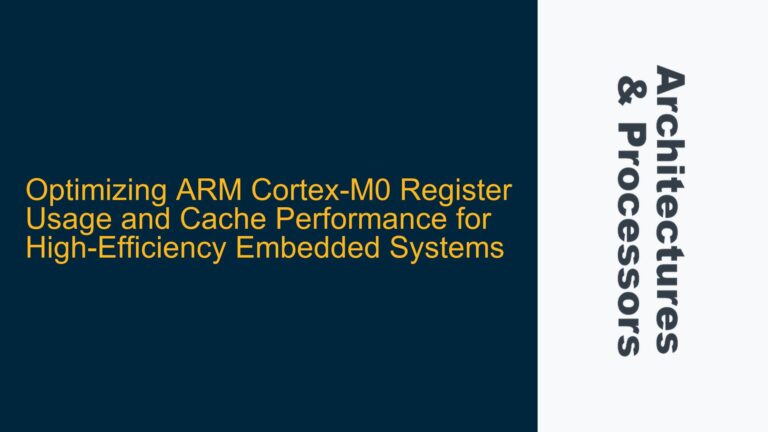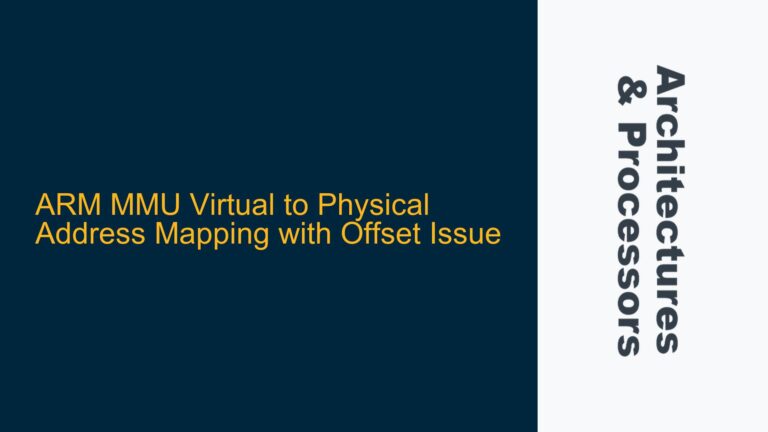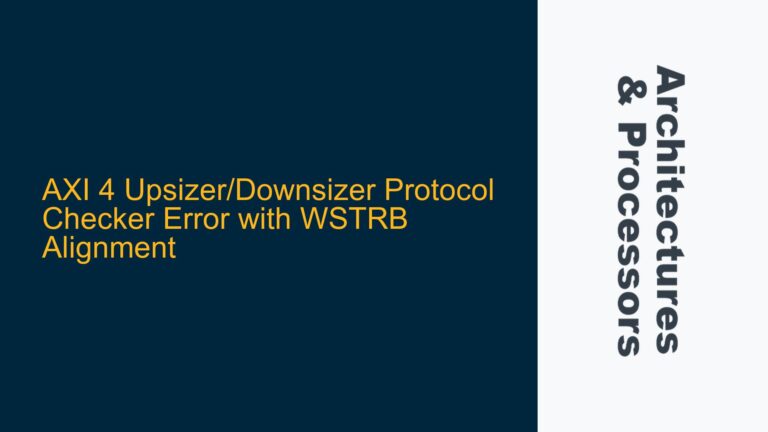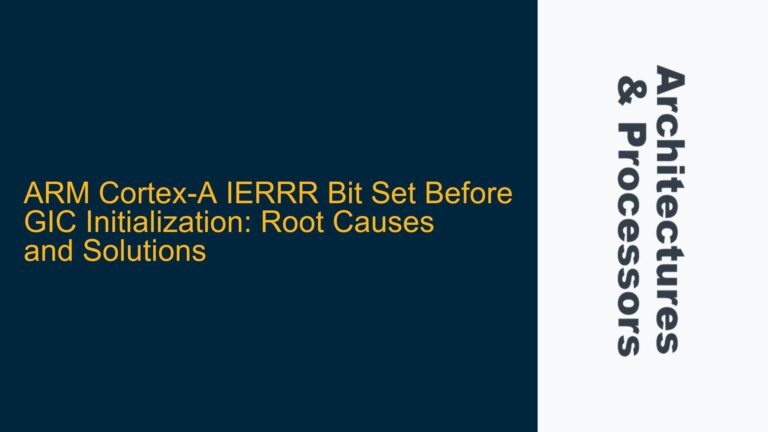Cortex-M0+ DSP Performance Bottlenecks in FFT and FIR Processing
The Cortex-M0+ is a highly efficient, low-power microcontroller core designed for cost-sensitive and power-constrained applications. However, its simplicity and lack of specialized hardware for digital signal processing (DSP) operations, such as Fast Fourier Transform (FFT) and Finite Impulse Response (FIR) filtering, can lead to significant performance bottlenecks. These bottlenecks are particularly pronounced when using the CMSIS-DSP library, which relies heavily on software emulation for DSP operations due to the absence of dedicated DSP instructions in the Cortex-M0+ architecture.
The Cortex-M0+ core lacks hardware support for floating-point operations, SIMD (Single Instruction, Multiple Data) instructions, and specialized multiply-accumulate (MAC) operations, which are critical for efficient DSP processing. As a result, FFT and FIR operations must be implemented using integer arithmetic or fixed-point arithmetic, which introduces additional complexity and potential performance degradation. Furthermore, the limited memory bandwidth and single-cycle multiply instruction further constrain the performance of DSP algorithms on this core.
In applications where FFT and FIR processing must be performed within strict timing constraints, the Cortex-M0+ may struggle to meet performance requirements. This is especially true when processing large datasets or when high precision is required. The absence of a hardware floating-point unit (FPU) means that floating-point operations are emulated in software, leading to significant overhead. Additionally, the lack of cache memory and the relatively low clock speeds of Cortex-M0+ devices exacerbate these challenges.
Architectural Limitations and Software Overhead in DSP Algorithms
The primary causes of performance limitations in DSP processing on the Cortex-M0+ stem from both architectural constraints and software-related inefficiencies. Understanding these causes is essential for identifying potential optimizations.
Architectural Constraints
-
Lack of DSP Instructions: The Cortex-M0+ does not include DSP-specific instructions, such as those found in the Cortex-M4 or Cortex-M7. These instructions, including SIMD operations and hardware MAC units, are critical for accelerating DSP algorithms. Without them, operations like FFT and FIR filtering must be implemented using general-purpose instructions, which are significantly slower.
-
No Hardware Floating-Point Unit (FPU): Floating-point operations are emulated in software on the Cortex-M0+, leading to a substantial performance penalty. This is particularly problematic for FFT and FIR algorithms, which often require high precision and extensive use of floating-point arithmetic.
-
Limited Memory Bandwidth: The Cortex-M0+ typically operates with a single-cycle access to SRAM, but the lack of cache memory and the relatively narrow memory bus can limit data throughput. This becomes a bottleneck when processing large datasets, as memory access latency can dominate execution time.
-
Single-Cycle Multiply Instruction: While the Cortex-M0+ supports a single-cycle 32-bit multiply instruction, it lacks the ability to perform parallel multiplications or accumulate results in a single cycle. This limits the efficiency of MAC operations, which are fundamental to FIR filtering and FFT computations.
Software Overhead
-
CMSIS-DSP Library Limitations: The CMSIS-DSP library is optimized for Cortex-M cores with DSP extensions, such as the Cortex-M4 and Cortex-M7. When used on the Cortex-M0+, many functions rely on software emulation, leading to suboptimal performance. For example, FFT functions may use generic C code instead of leveraging specialized instructions.
-
Fixed-Point Arithmetic Challenges: To mitigate the lack of an FPU, developers often use fixed-point arithmetic (e.g., Q15 or Q31 formats). However, this introduces additional complexity, such as the need for careful scaling and saturation handling, which can reduce performance and increase code size.
-
Inefficient Data Access Patterns: DSP algorithms often require frequent access to large datasets, which can lead to inefficient memory access patterns. Without cache memory, these patterns can result in significant performance degradation due to increased memory latency.
-
Suboptimal Compiler Optimizations: The compiler may not always generate the most efficient code for DSP algorithms on the Cortex-M0+. For example, loop unrolling and inline expansion may not be applied effectively, leading to missed optimization opportunities.
Strategies for Optimizing DSP Performance on Cortex-M0+
To address the performance limitations of DSP processing on the Cortex-M0+, developers can employ a combination of algorithmic optimizations, software improvements, and hardware-aware techniques. The following strategies provide a comprehensive approach to improving FFT and FIR performance on this core.
Algorithmic Optimizations
-
Fixed-Point Arithmetic: Replace floating-point arithmetic with fixed-point arithmetic to eliminate the overhead of software FPU emulation. Use Q15 or Q31 formats for FFT and FIR computations, ensuring proper scaling and saturation handling to maintain precision.
-
Reduced Precision: Where possible, reduce the precision of calculations to minimize the number of operations. For example, using 16-bit fixed-point arithmetic instead of 32-bit can significantly reduce computation time, albeit at the cost of some accuracy.
-
Algorithmic Simplification: Simplify DSP algorithms by reducing the number of stages or coefficients in FIR filters or by using a smaller FFT size. While this may impact the quality of the results, it can provide a trade-off between performance and accuracy.
-
Lookup Tables: Precompute and store frequently used values, such as sine and cosine coefficients for FFT, in lookup tables. This reduces the need for runtime calculations and can improve performance.
Software Improvements
-
Handwritten Assembly Code: Write critical sections of DSP algorithms in assembly language to optimize performance. For example, implement MAC operations and FFT butterfly stages in assembly to minimize instruction overhead.
-
Compiler Optimizations: Enable aggressive compiler optimizations, such as -O3, and use compiler-specific pragmas to guide optimization. For example, use
__attribute__((optimize("O3")))in GCC to optimize specific functions. -
Memory Access Optimization: Optimize data access patterns to minimize memory latency. Use aligned memory accesses and avoid unnecessary data transfers. For example, store frequently accessed data in tightly coupled memory (TCM) if available.
-
Loop Unrolling and Inlining: Manually unroll loops and inline small functions to reduce the overhead of function calls and loop control. This can improve performance at the cost of increased code size.
Hardware-Aware Techniques
-
Overclocking: If the application allows, increase the clock speed of the Cortex-M0+ core to improve performance. Ensure that the hardware can support the higher clock rate without stability issues.
-
DMA for Data Transfers: Use Direct Memory Access (DMA) to offload data transfers between memory and peripherals. This frees up the CPU to focus on DSP computations.
-
Peripheral Acceleration: Leverage hardware peripherals, such as timers and GPIOs, to offload tasks like data sampling or triggering. This can reduce the computational burden on the CPU.
-
Power Management: Optimize power management settings to ensure that the Cortex-M0+ operates at its maximum performance level when running DSP algorithms. Disable unused peripherals and reduce clock gating to minimize power-related performance degradation.
Example: Optimizing FFT on Cortex-M0+
To illustrate these strategies, consider the optimization of a 256-point FFT on the Cortex-M0+. The following steps outline the process:
-
Convert to Fixed-Point: Replace floating-point arithmetic with Q15 fixed-point arithmetic. Use the CMSIS-DSP library’s fixed-point FFT functions or implement a custom fixed-point FFT.
-
Precompute Twiddle Factors: Store the twiddle factors (sine and cosine values) in a lookup table to avoid runtime calculations.
-
Optimize Butterfly Stages: Implement the FFT butterfly stages in assembly language to minimize instruction overhead. Use loop unrolling to reduce loop control overhead.
-
Align Data: Ensure that input and output data buffers are aligned to 32-bit boundaries to optimize memory access.
-
Profile and Iterate: Use a profiler to identify performance bottlenecks and iteratively optimize the code. Focus on the most time-consuming sections, such as the inner loops of the FFT algorithm.
By applying these strategies, developers can significantly improve the performance of DSP algorithms on the Cortex-M0+, enabling it to meet the requirements of demanding applications. While the Cortex-M0+ may not be the ideal choice for high-performance DSP processing, careful optimization can unlock its potential and make it a viable option for cost-sensitive and power-constrained designs.
